Note: There are many instances where design appears to fail, where people through their use or behaviour subvert or reject design intentions, in the public realm that remains in plain sight and goes unnoticed by most of us in everyday life. This study revolves around and maps out instances where trees become the anchor point to interpret the correlation between the design intentions and behaviour of various users of public spaces. The study focused on the 3 km stretch from University Road to Navrangpura Gam in Ahmedabad.
Trees in the city play an important role, they are widely distributed from the middle of the road, on the pavement, in between the boundary walls. They are living landmarks that define space, contribute to air quality, and connect us to nature. Despite their ubiquity, most of us take trees for granted and know little of their civic virtues. The photo essay looks at the problems and possibilities of the trees in structuring the public realm of a street. In what way they are considered a liability by the designer while an opportunity, to inhabit, appropriate and exploit spaces they create, by the users in various ways.
The ways in which trees get inhabited, appropriated and exploited depends on the inherent characteristics of tree growth – age, size, appearance, their cultural – religious significance and relative position to other street elements. The old native trees by means of their recognized physical attributes – larger girths, dense canopies and foliage, lend themselves to various types of inhabitation by users. Trees ranging from 30 years and more form the tree palette for older trees. They create larger shaded areas, which in a hot place like Ahmedabad become natural places for people to gather. The old trees by virtue of their massiveness and abundance on the streets of Ahmedabad invite people to create permanent ‘temporary shelters’ and converting space around them into shrines while other varieties of species are marked to set up small businesses (Tea vendors, Mechanics, Barbers etc).
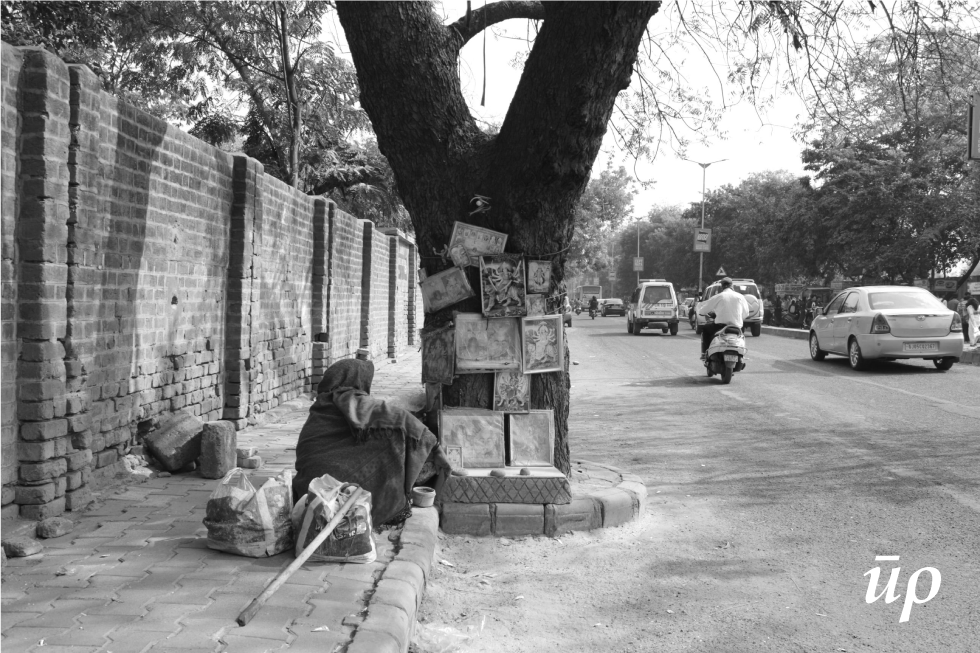
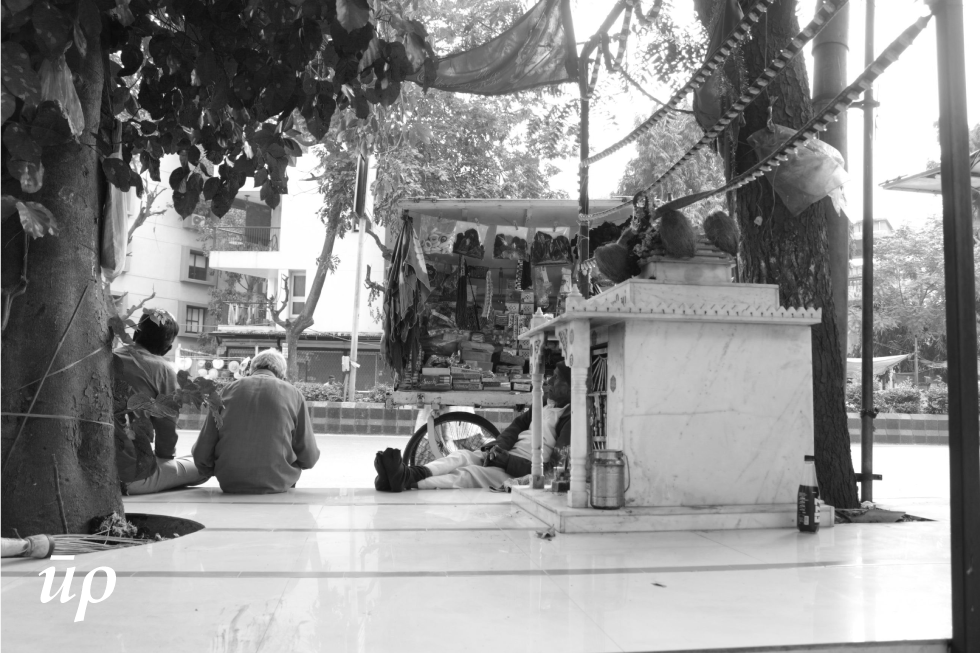
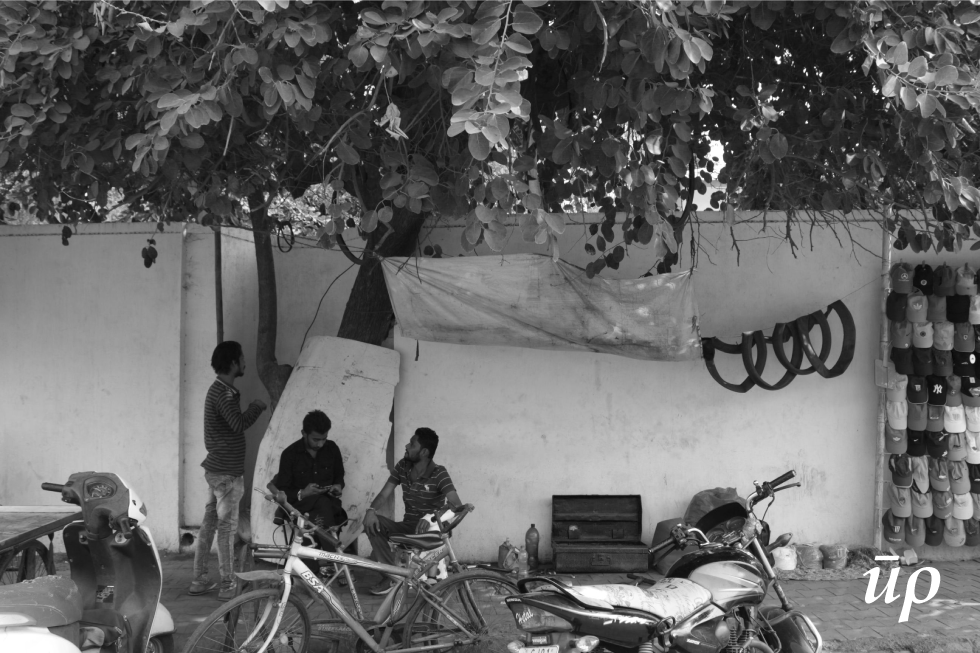
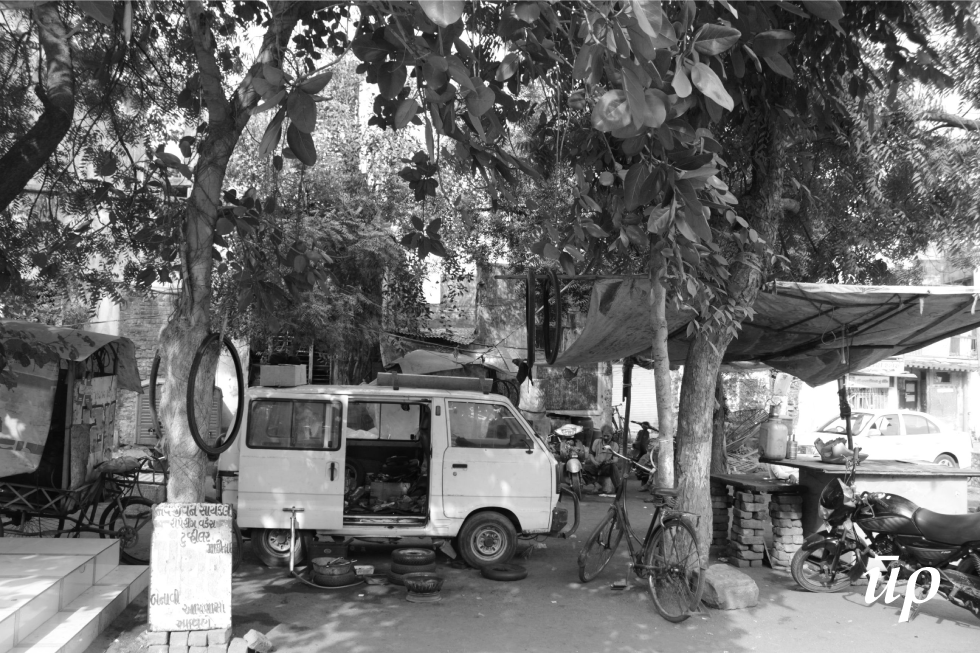
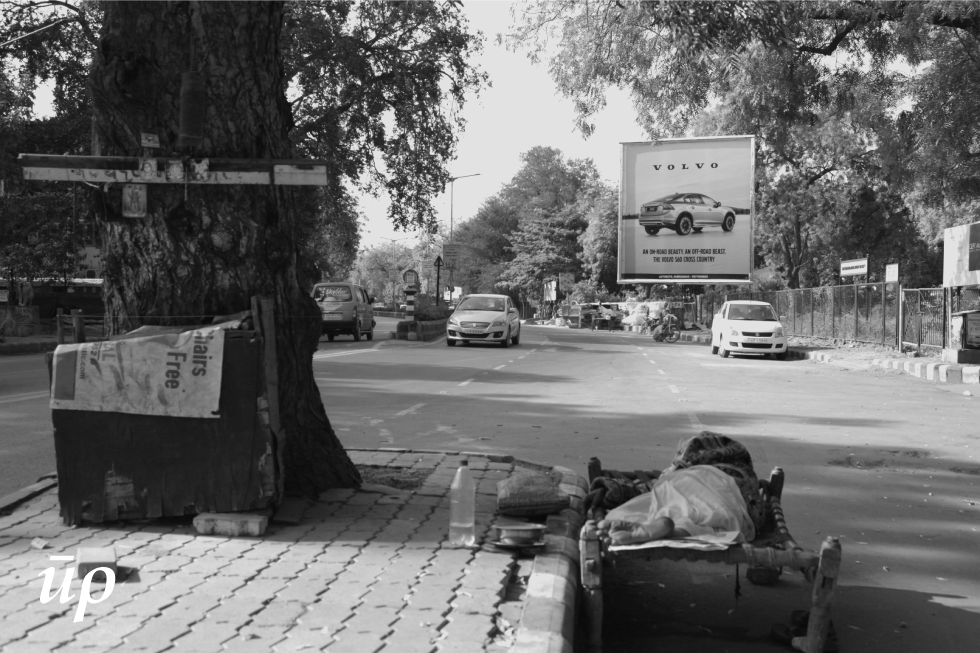
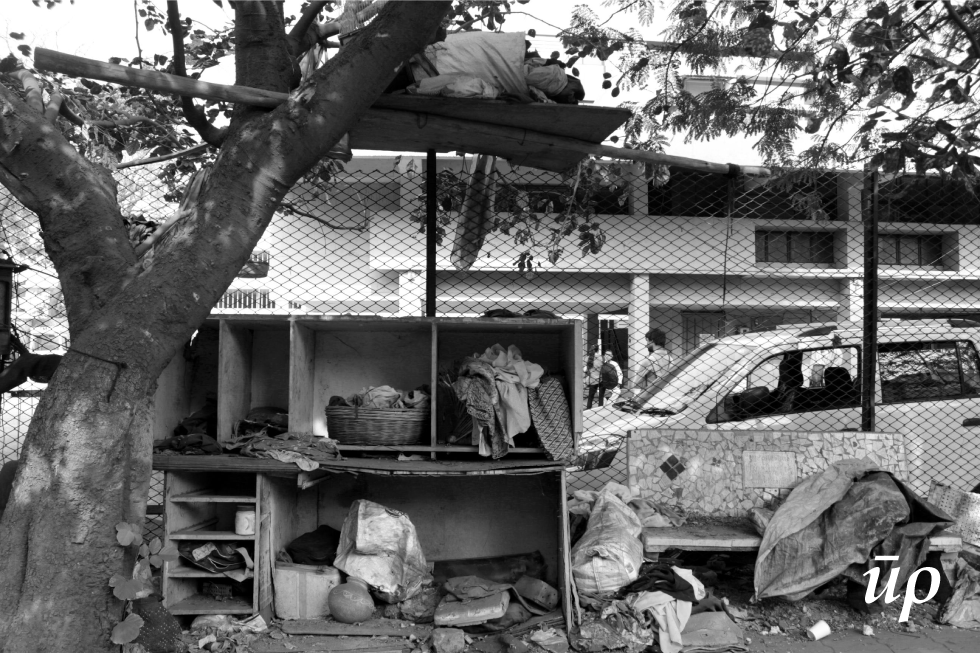
The native younger trees ranging from 10 – 30 years are typically placed in a tree pit with a tree guard on pavement and side of the roads. These younger trees are not shade-giving yet but act as fixtures in street landscape. Municipality uses them to stamp the road edges green without taking into consideration their inherent growth characteristics over time. Their placement on the pavements creates various ways for the users in which younger trees gets appropriated and exploited. The pavements in Ahmedabad are put to the arrangement of different uses by adjacent property owners, homeless on the streets, vendors who end up using tree guards to facilitate household spill over, as a prop to display and advertise, the tree as an electric pole. Comparing to old trees which are sites of in-habitation they act as fixtures that get subverted in public realm of the street.
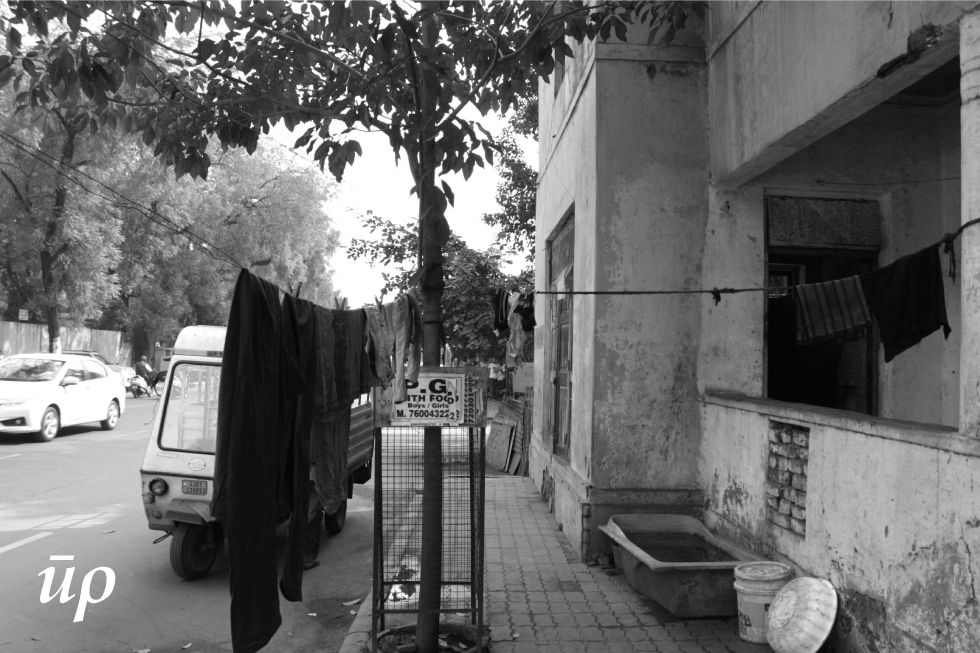
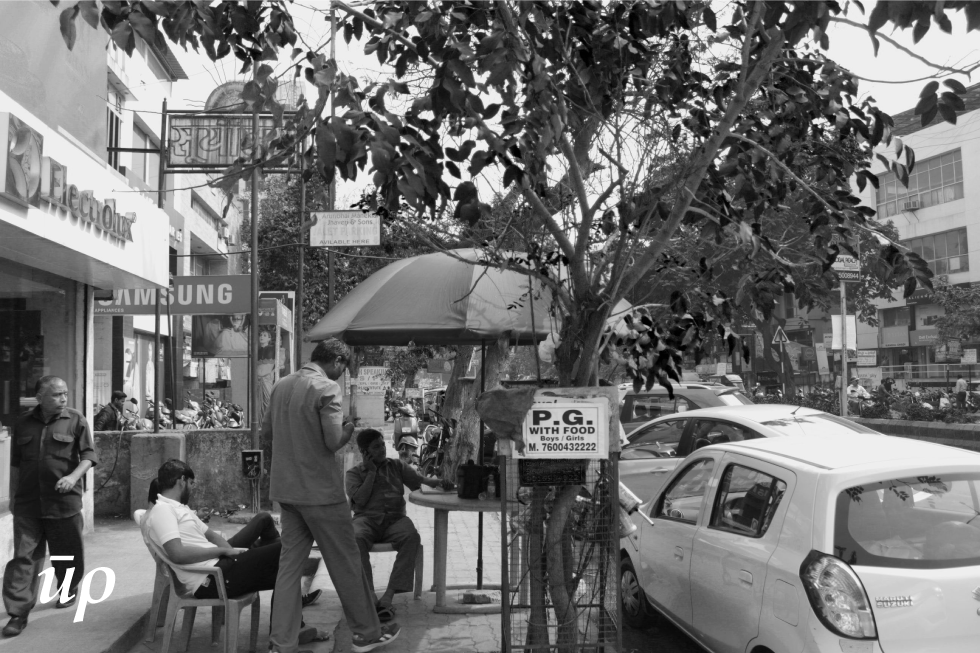
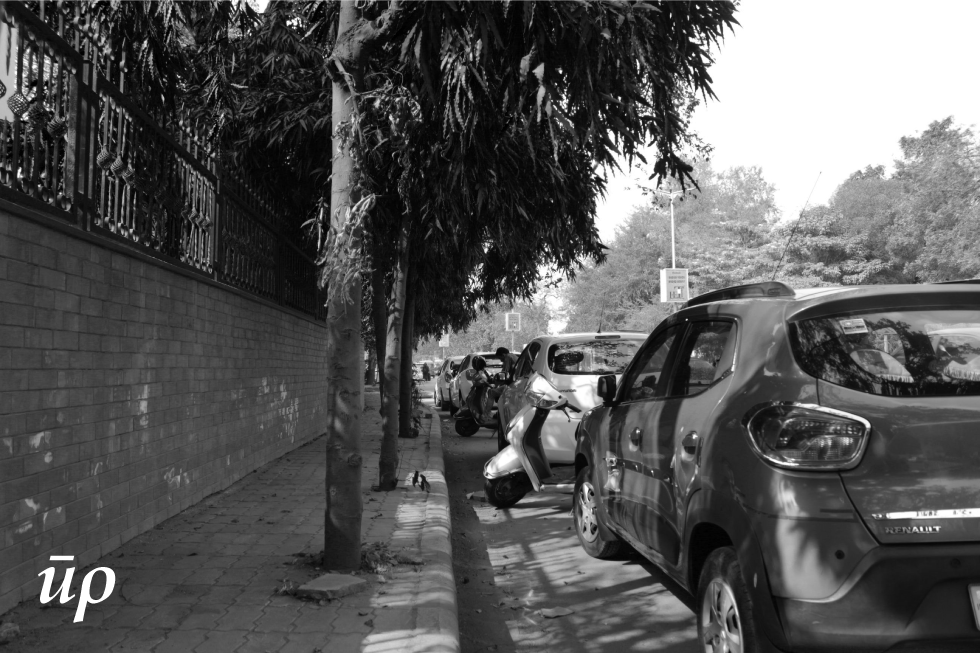
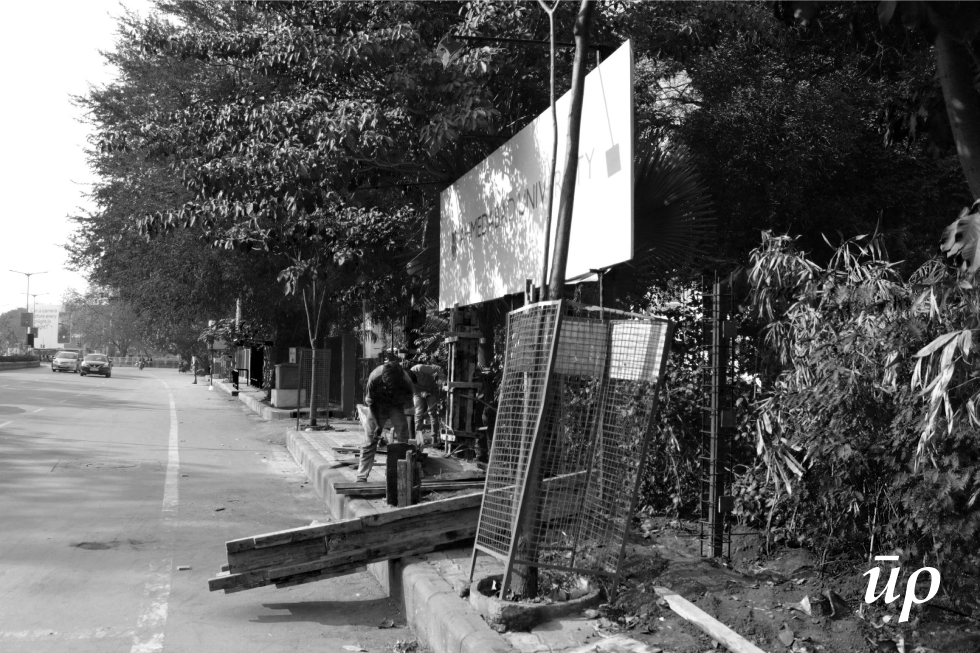
Trees are located in the public realm of the street by the virtue of their location and various physical attributes engender very particular kinds of life and activities around them. The intangible uses of trees include their environmental, health benefits and aesthetic value which, in the city, are well-known dimensions of trees regardless of their age and size. While age and size form the key difference for the growth of varied kind of in-habitations and appropriations around trees.
They present a challenge for the design of the public realm. The older trees that are now huge was planted when width and uses of the street were very different. By the time they grew into impressive large entities, they are found in the middle of the road, as very often the traffic in Ahmedabad changed and grew. It is at this point the classic conundrum for the municipality emerges. To add pavement around a tree and allow the tree continue shading the street or to get rid of them.
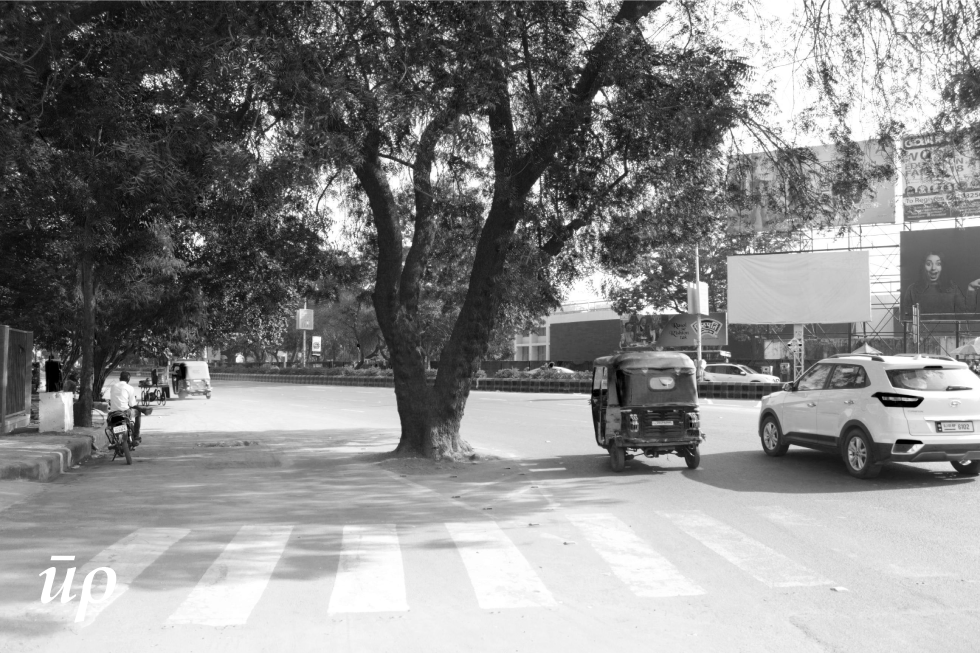
The fact that there is no clear answer is evident in the photo essay. There are instances where pavements are appropriated to a tree in the middle (of the road) in all likelihood to get cut down as it presents a threat to traffic. The removal of trees at an obvious level is a short-sighted solution considering their valuable and much needed environmental benefits to the city. Trees are natural anchors to attract people and are invitations to subvert the structure of public realm through informal occupation. As per the municipal approach for design, it is a subversion that is evident through repeated eviction of these people. It disrupts the orderliness of the urban order.
A municipality, in general, is reluctant towards informality. Design in public realm is largely a matter of bureaucracy that is directly challenged by trees. Condition around each tree on each street is different and, therefore, to have a general attitude is problematic. Designing with trees becomes an invitation to subvert the use of the street. Trees are both necessity and challenge. They are traffic nuisance but can be seen as convivial spaces for shelter and shade, the fact that they take years to grow by which time the street itself changes contradicts the desired rigidity of the urban order.
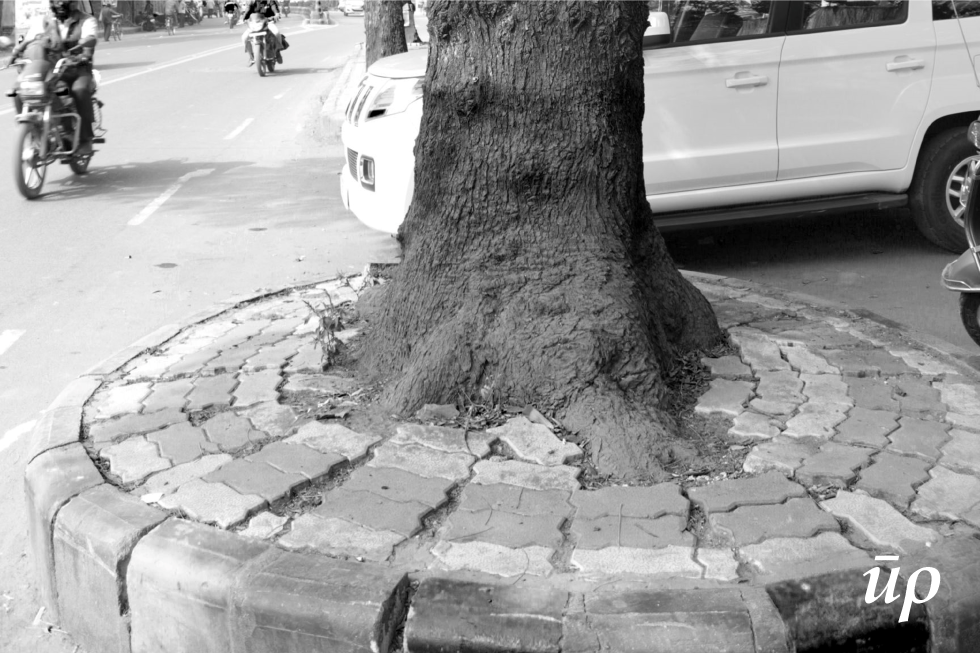
The emphasis of this essay is to open up the basic questions, through trees, that are in plain sight but gets unnoticed and unquestioned by most of us and also to provide for the larger picture. Trees can be seen as the proponents of change and openness by virtue of their growth that contradicts with the rigidity of the municipal public realm. The design of public realm desires to be flexible by virtue of its constant change. But is standardized as a closed and determined form by bureaucracy.

Leave a Reply
You must be logged in to post a comment.